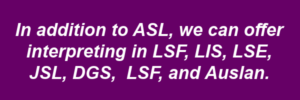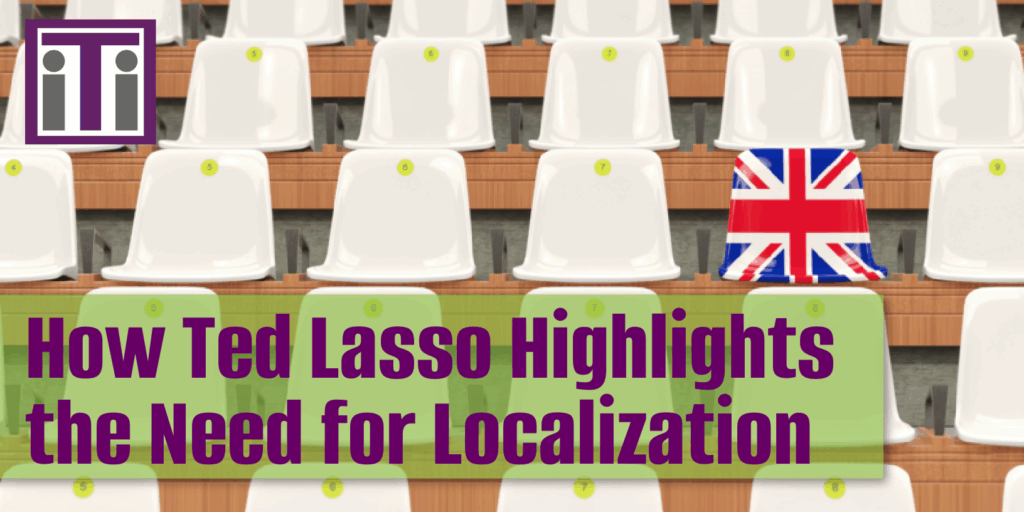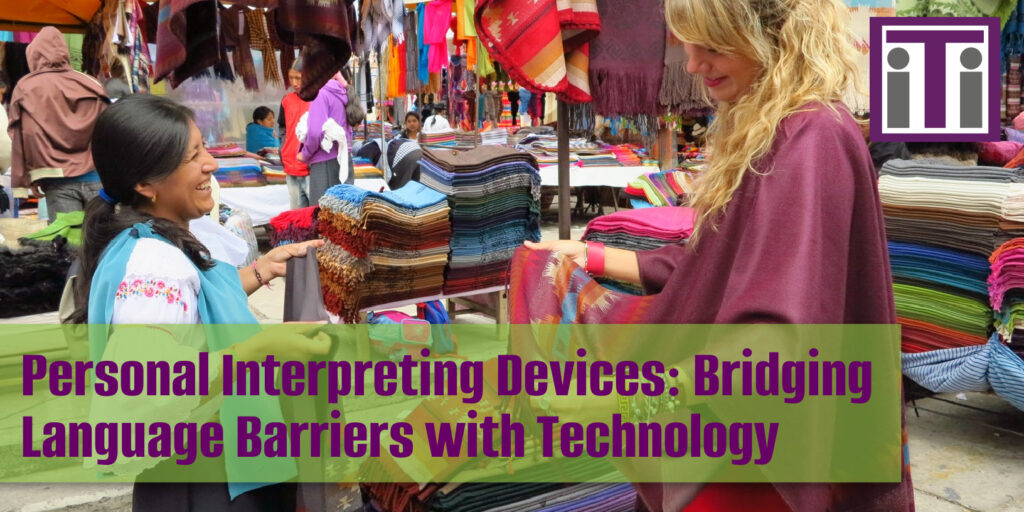Global Sign Languages: Differences, Similarities, and the Role of CDIs
Reading Time: ~7 mins

Sign languages are rich, complex, and diverse forms of communication used by Deaf communities around the world. Each sign language has its own unique grammar, vocabulary, and cultural nuances. In this post, we’ll explore some of the most widely used sign languages, including American Sign Language (ASL), British Sign Language (BSL), and others, and discuss how they differ from one another. We’ll also highlight the role of Certified Deaf Interpreters (CDIs) and how iTi can support your interpreting needs.
According to Wikipedia, there are more than 300 sign languages in use around the world. These include:
- Deaf Sign Languages. These are the primary languages of Deaf communities and are what most people think of when they hear the term. Each has their own grammar, syntax, and vocabulary.
- Auxiliary Sign Languages. These are not fully developed languages, but rather systems of signs used alongside spoken languages. They are typically used to facilitate communication among speakers of different oral languages. One example is Plains Indian Sign Language, which was used as a lingua franca among various Native American tribes.
- Manually Coded Languages. These are systems that represent spoken languages in a signed form, designed to represent the grammar of the spoken language, rather than the unique grammar and syntax of the deaf sign language. They are specifically designed to teach the spoken language structure.
Deaf Sign Languages
While far from a comprehensive list, the following are some of the most commonly used deaf sign languages.
American Sign Language (ASL)
American Sign Language (ASL) is the predominant sign language used in the United States and parts of Canada. ASL has its own grammar and syntax, which are distinct from English. It is a visual language that uses hand shapes, facial expressions, and body movements to convey meaning. ASL is deeply rooted in Deaf culture and is an essential part of the Deaf community’s identity.
British Sign Language (BSL)
British Sign Language (BSL) is the sign language used in the United Kingdom. Like ASL, BSL has its own grammar and lexicon. One of the key differences between ASL and BSL is the use of two-handed fingerspelling in BSL, compared to the one-handed fingerspelling system in ASL. BSL also incorporates unique signs and expressions that reflect British culture. For more about the differences between ASL and BSL, see our article Sign Language and the Great British Baking Show.
French Sign Language (LSF)
French Sign Language (Langue des Signes Française, LSF) is used in France and parts of Switzerland. LSF has influenced many other sign languages around the world, including ASL. The structure and vocabulary of LSF are distinct from spoken French, making it a unique language in its own right.
Italian Sign Language (LIS)
Italian Sign Language (Lingua dei Segni Italiana, LIS) is the sign language used by the Deaf community in Italy. LIS has its own grammatical rules and is not a direct translation of Italian. It is a vibrant language that reflects the culture and traditions of Italy’s Deaf community.
Spanish Sign Language (LSE)
Spanish Sign Language (Lengua de Signos Española, LSE) is used in Spain. LSE has regional variations, with different signs used in various parts of the country. Despite these differences, LSE remains a unifying language for the Spanish Deaf community.
Japanese Sign Language (JSL)
Japanese Sign Language (JSL) is the sign language used in Japan. JSL includes unique elements such as mouthing Japanese words and using specific facial expressions to convey meaning. It is a rich language that reflects the cultural heritage of Japan’s Deaf community.
German Sign Language (DGS)
German Sign Language (Deutsche Gebärdensprache, DGS) is used in Germany. DGS has its own syntax and grammar, which are different from spoken German. It is a fully developed language with a rich history and cultural significance.
Australian Sign Language (Auslan)
Australian Sign Language (Auslan) is the sign language used in Australia. Auslan has two major dialects, Northern and Southern, which have some differences in vocabulary and usage. Auslan is an integral part of Australia’s Deaf culture.
The Role of Certified Deaf Interpreters (CDIs)
Certified Deaf Interpreters (CDIs) play a crucial role in bridging communication gaps between Deaf and hearing individuals. Here’s a deeper look into their importance and functions:
What is a Certified Deaf Interpreter?
A Certified Deaf Interpreter (CDI) is a Deaf individual who has received specialized training and certification to provide interpreting services. CDIs possess an in-depth understanding of Deaf culture, sign language, and the unique communication needs of Deaf individuals. Their expertise goes beyond fluency in sign language; they are skilled in conveying complex concepts and cultural nuances that might be missed by hearing interpreters.
Why are CDIs Important?
- Cultural Competence: CDIs have lived experiences within the Deaf community, giving them a profound cultural competence. This allows them to interpret not just the language but also the cultural context, ensuring that the message is accurately conveyed.
- Enhanced Communication: In situations where communication is particularly nuanced or complex, such as legal, medical, or mental health settings, CDIs can provide a level of clarity and understanding that might be challenging for hearing interpreters alone. They work alongside hearing interpreters to ensure that all parties fully understand each other.
- Specialized Knowledge: CDIs often have specialized knowledge in various fields, making them invaluable in settings that require specific terminology or concepts. Their ability to interpret these accurately can be critical in ensuring effective communication.
- Trust and Comfort: Deaf individuals may feel more comfortable and understood when working with a CDI. This trust can lead to more effective and open communication, particularly in sensitive or high-stress situations.

How CDIs Work
CDIs typically work in tandem with hearing interpreters. Here’s how the process usually works:
- Preparation: The CDI and the hearing interpreter prepare together, discussing the context and specific needs of the assignment. This collaboration ensures that both interpreters are on the same page and can provide seamless service.
- Interpreting: During the interpreting session, the hearing interpreter listens to the spoken language and translates it into sign language for the CDI. The CDI then conveys the message to the Deaf individual, ensuring that all cultural and linguistic nuances are accurately represented. The process is reversed for the Deaf individual’s responses.
- Collaboration: Throughout the session, the CDI and the hearing interpreter work closely, constantly checking in with each other to ensure accuracy and clarity. This collaborative approach enhances the overall quality of the interpretation.
When to Use a CDI
CDIs are particularly beneficial in situations where:
- The Deaf individual uses a non-standard form of sign language or has limited proficiency in the dominant sign language.
- The communication involves complex or sensitive information.
- There is a need for a deep cultural understanding to ensure accurate interpretation.
iTi’s Commitment to Quality Language Services
At Interpreters and Translators, Inc. (iTi), we recognize the invaluable role that CDIs play in effective communication. Our team includes highly skilled CDIs who are ready to assist in a variety of settings, ensuring that all communication is clear, accurate, and culturally appropriate. Whether you need ASL, CDI, or interpreting services for other sign languages, iTi is here to support your needs with professionalism and expertise.
| Talk to an Expert |
Interpreters and Translators, Inc. is a full-service language solutions company based in Glastonbury, Connecticut. iTi is an NMSDC-certified minority owned business.






